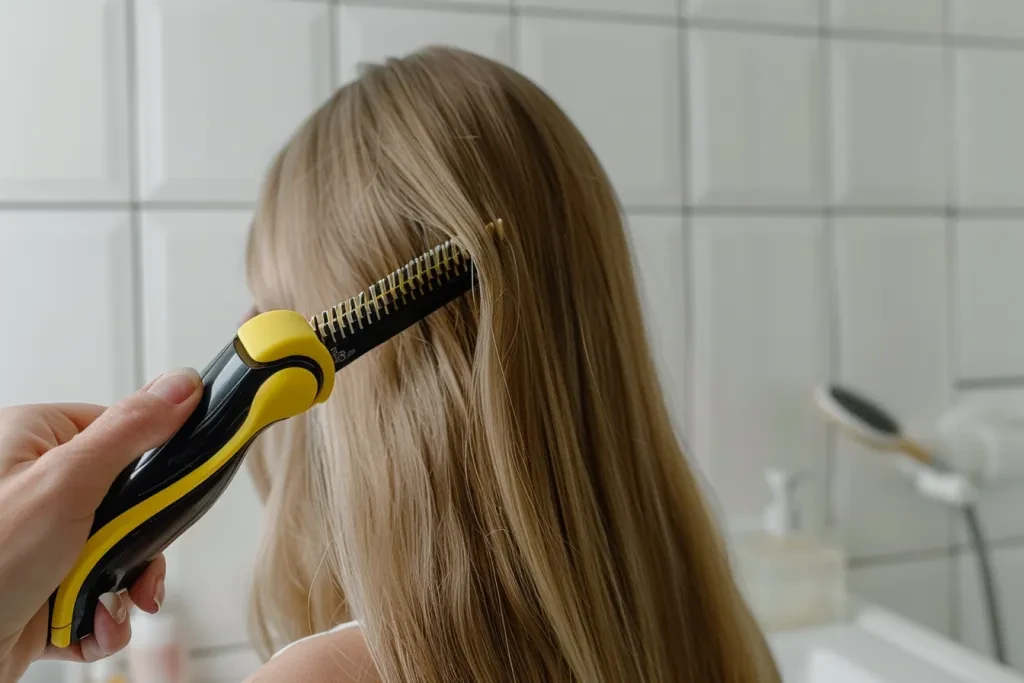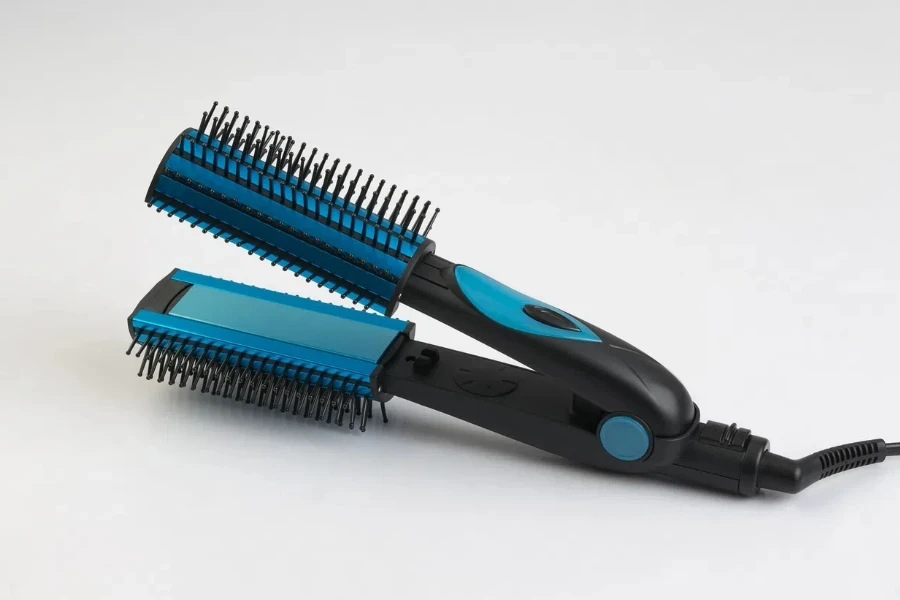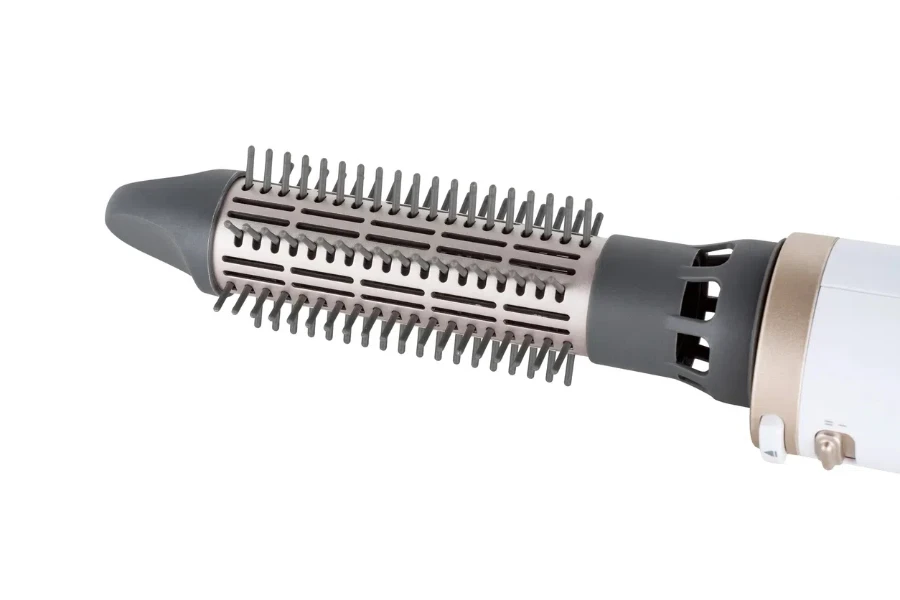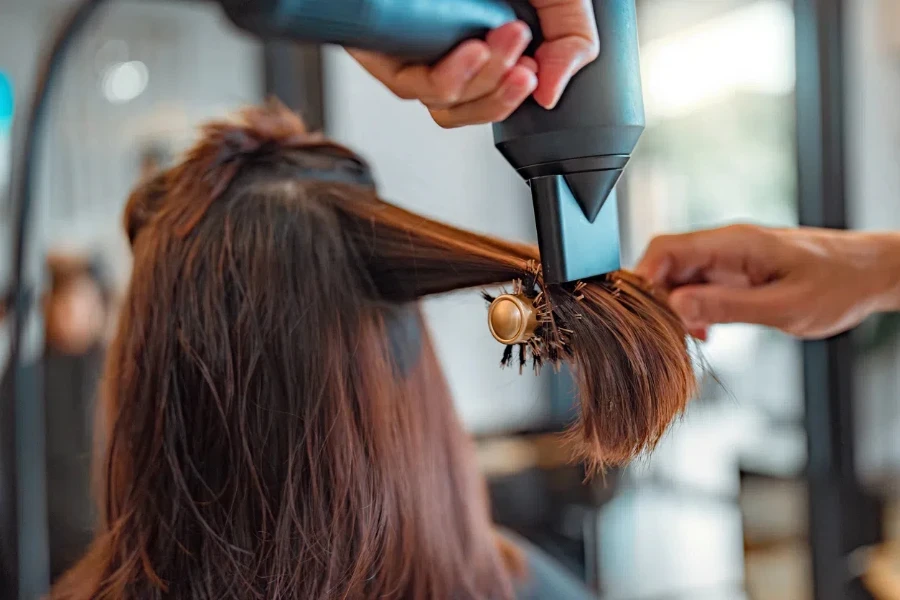In the ever-evolving world of beauty and personal care, hot combs have emerged as a must-have tool for achieving sleek, straight hairstyles. As we step into 2025, the demand for hot combs is on the rise, driven by social media trends and the growing emphasis on personal grooming. This guide delves into the essentials of hot combs, their market potential, and the trends propelling their popularity.
Table of Contents:
– Understanding Hot Combs and Their Market Potential
– Exploring Different Types of Hot Combs
– Addressing Common Consumer Pain Points
– Innovations and New Products in the Hot Comb Market
– Key Factors to Consider When Sourcing Hot Combs
Understanding Hot Combs and Their Market Potential

What Are Hot Combs? A Quick Overview
Hot combs, also known as pressing combs, are specialized hair styling tools designed to straighten hair by applying heat. These combs are particularly popular among individuals with curly or coily hair textures, offering a convenient way to achieve smooth, straight hair without the need for chemical treatments. The versatility and ease of use of hot combs make them a staple in both professional salons and household beauty routines.
Social Media Trends Driving Hot Comb Popularity
The influence of social media on beauty trends cannot be overstated. Platforms like Instagram, TikTok, and YouTube have become breeding grounds for beauty tutorials and product recommendations. Hashtags such as #HotCombChallenge and #SleekHairGoals have garnered millions of views, showcasing the transformative power of hot combs. Beauty influencers and content creators frequently feature hot combs in their styling routines, further amplifying their appeal and driving consumer interest.
Aligning Hot Combs with Broader Beauty Trends
The broader beauty landscape in 2025 is characterized by a shift towards inclusivity and personalization. Consumers are increasingly seeking products that cater to diverse hair types and styling preferences. Hot combs align perfectly with this trend, offering a solution for individuals looking to embrace their natural hair texture while achieving a polished look. Additionally, the rise of DIY beauty routines has fueled the demand for user-friendly styling tools, positioning hot combs as a go-to choice for at-home hair care.
According to a professional report, the global hair styling tools market is projected to grow significantly, reaching $42.98 billion by 2028, with a compound annual growth rate (CAGR) of 7.4%. This growth is driven by advancements in technology, the popularity of smart and connected styling devices, and the increasing demand for sustainable and eco-friendly products. Hot combs, with their ability to deliver salon-quality results at home, are well-positioned to capitalize on these trends.
In conclusion, hot combs are more than just a styling tool; they are a reflection of the evolving beauty standards and consumer preferences in 2025. As social media continues to shape beauty trends and the demand for personalized, inclusive products grows, hot combs are set to play a pivotal role in the beauty and personal care industry. Business buyers looking to tap into this burgeoning market should consider the potential of hot combs to meet the diverse needs of their customers and stay ahead of the curve.
Exploring Different Types of Hot Combs

Electric vs. Manual Hot Combs: Pros and Cons
When it comes to hot combs, business buyers in the beauty and personal care industry must consider the distinct advantages and disadvantages of electric versus manual hot combs. Electric hot combs are favored for their convenience and efficiency. They heat up quickly and maintain a consistent temperature, which is crucial for achieving uniform results. This makes them ideal for professional settings where time and consistency are paramount. However, electric hot combs can be more expensive and require access to a power source, which may limit their portability.
On the other hand, manual hot combs, often heated on a stove or open flame, offer greater control over the heat level, allowing for a more customized styling experience. They are typically more affordable and portable, making them a practical choice for mobile stylists or those working in areas with limited electricity. However, manual hot combs can be time-consuming to use and may pose a higher risk of heat damage if not used carefully. According to a report by WGSN, the demand for tools that minimize heat damage is increasing, highlighting the importance of choosing the right type of hot comb for specific needs.
Material Matters: Ceramic, Titanium, and More
The material of a hot comb significantly impacts its performance and suitability for different hair types. Ceramic hot combs are popular due to their ability to distribute heat evenly, reducing the risk of hot spots that can cause hair damage. They are also known for their smooth glide, which minimizes friction and breakage. Ceramic hot combs are particularly beneficial for fine to medium hair types, providing a gentle yet effective styling experience.
Titanium hot combs, on the other hand, are known for their durability and ability to maintain high temperatures. They heat up quickly and retain heat well, making them suitable for thick, coarse, or curly hair that requires more intense heat to achieve desired styles. However, the high heat can be damaging if not used correctly, so it’s essential to have adjustable temperature settings.
Other materials, such as tourmaline, are also gaining popularity. Tourmaline hot combs emit negative ions that help to seal the hair cuticle, reducing frizz and enhancing shine. This makes them an excellent choice for achieving sleek, polished looks. As the beauty industry continues to innovate, materials that combine these benefits are emerging, offering multifunctional benefits that cater to a wide range of hair types and styling needs.
Consumer Feedback on Popular Hot Comb Models
Consumer feedback is a valuable resource for business buyers looking to source the best hot combs. Reviews often highlight the practical aspects of using these tools, such as ease of use, effectiveness, and durability. For instance, the Shark FlexStyle Air Styling & Drying System has received positive reviews for its versatility and ability to style different hair types with minimal heat damage. Users appreciate its ergonomic design and multiple attachments, which make it a comprehensive styling tool.
Similarly, the Dyson Airwrap has garnered attention for its innovative technology that combines air and heat to style hair without extreme temperatures. Consumers have praised its ability to create long-lasting styles while maintaining hair health. These insights can guide business buyers in selecting hot comb models that meet consumer expectations and deliver consistent performance.
Addressing Common Consumer Pain Points

Heat Damage Concerns and Solutions
Heat damage is a significant concern for consumers using hot combs, and addressing this issue is crucial for business buyers. According to a report by The Benchmarking Company, 51% of respondents want haircare products with ‘hair health’ benefits. To mitigate heat damage, it’s essential to source hot combs with adjustable temperature settings, allowing users to customize the heat level based on their hair type and condition. Additionally, incorporating materials like ceramic and tourmaline can help distribute heat evenly and reduce the risk of damage.
Innovative features such as infrared technology, which penetrates the hair shaft to heat from within, can also minimize surface damage. Brands like GHD have successfully integrated such technologies into their products, offering consumers a safer styling experience. Providing clear usage instructions and promoting the use of heat protectant sprays can further enhance consumer satisfaction and loyalty.
Ease of Use: Ergonomics and Design
The design and ergonomics of hot combs play a crucial role in their usability. Consumers seek tools that are comfortable to hold and easy to maneuver, especially for extended styling sessions. Ergonomic handles, lightweight materials, and swivel cords are features that enhance user experience and reduce fatigue. According to a report by WGSN, there is a growing demand for user-friendly tools that simplify haircare routines.
Brands like Dyson have set a benchmark with their ergonomic designs, incorporating features like balanced weight distribution and intuitive controls. Business buyers should prioritize sourcing hot combs that offer these ergonomic benefits, ensuring that the tools are not only effective but also comfortable to use.
Durability and Longevity: What Buyers Need to Know
Durability is a key consideration for business buyers, as it directly impacts customer satisfaction and return rates. Hot combs made from high-quality materials such as titanium and tourmaline are known for their longevity and resistance to wear and tear. Additionally, features like reinforced cords and sturdy construction can enhance the durability of these tools.
Investing in hot combs from reputable brands with a track record of quality can also ensure product longevity. For instance, brands like Conair and BaBylissPRO are well-regarded for their durable styling tools. Offering warranties and robust customer support can further reassure consumers of the product’s reliability and encourage repeat purchases.
Innovations and New Products in the Hot Comb Market

Latest Technological Advancements in Hot Combs
The hot comb market is witnessing significant technological advancements aimed at improving performance and user experience. One notable innovation is the integration of smart technology, which allows hot combs to adjust temperature settings automatically based on hair type and condition. This ensures optimal styling results while minimizing the risk of heat damage. Brands like T3 have introduced smart hot combs that use sensors to monitor and adjust heat levels in real-time.
Another advancement is the use of ionic technology, which emits negative ions to reduce frizz and enhance shine. This technology is particularly beneficial for achieving sleek, polished looks and is becoming a standard feature in high-end hot combs. Additionally, the development of cordless hot combs with rechargeable batteries offers greater flexibility and convenience, catering to the needs of mobile stylists and consumers on the go.
Eco-Friendly and Sustainable Hot Comb Options
Sustainability is becoming a critical factor in the beauty and personal care industry, and the hot comb market is no exception. Consumers are increasingly seeking eco-friendly products that minimize environmental impact. In response, manufacturers are developing hot combs made from sustainable materials and incorporating energy-efficient technologies.
For example, brands like EBB and Highland Style Co. are leading the way with eco-friendly hot combs that use natural materials and avoid harmful chemicals. These products not only appeal to environmentally conscious consumers but also align with broader industry trends towards sustainability. Business buyers should consider sourcing hot combs that meet these criteria to cater to the growing demand for sustainable beauty products.
Emerging Brands and Their Unique Offerings
The hot comb market is also seeing the emergence of new brands that bring unique offerings to the table. These brands often focus on niche markets or innovative features that set them apart from established players. For instance, the brand Moxie Beauty has introduced hot combs specifically designed to combat humidity and frizz, catering to consumers in tropical climates.
Another emerging brand, Dinaïa, combines ancestral wisdom with modern science to create hot combs that protect and nourish hair using natural ingredients. These unique offerings not only address specific consumer needs but also provide business buyers with diverse options to expand their product portfolios and attract new customer segments.
Key Factors to Consider When Sourcing Hot Combs

Quality Assurance and Safety Standards
Ensuring quality and safety is paramount when sourcing hot combs. Business buyers should prioritize products that comply with international safety standards and certifications. This includes features like automatic shut-off, heat-resistant handles, and overheat protection. According to a report by The Business Research Company, advancements in AI and technology are playing a significant role in enhancing the safety and efficiency of hair tools.
Conducting thorough quality checks and partnering with reputable manufacturers can help mitigate risks and ensure that the products meet consumer expectations. Additionally, providing clear usage instructions and safety guidelines can further enhance consumer confidence and satisfaction.
Supplier Reliability and Product Consistency
The reliability of suppliers is a crucial factor in maintaining product consistency and meeting consumer demand. Business buyers should conduct due diligence to assess the track record and reputation of potential suppliers. This includes evaluating their production capabilities, quality control processes, and adherence to delivery timelines.
Establishing long-term partnerships with reliable suppliers can ensure a steady supply of high-quality hot combs and minimize disruptions in the supply chain. Regular communication and collaboration with suppliers can also help address any issues promptly and maintain product consistency.
Pricing Strategies and Bulk Purchase Benefits
Pricing is a critical consideration for business buyers, as it directly impacts profitability and competitiveness. Sourcing hot combs at competitive prices while maintaining quality is essential. Business buyers should explore bulk purchase options and negotiate favorable terms with suppliers to achieve cost savings.
Offering tiered pricing and volume discounts can also incentivize bulk purchases and attract larger orders. Additionally, providing value-added services such as private labeling and customized packaging can enhance the appeal of the products and differentiate them in the market.
Conclusion
In conclusion, sourcing the right hot combs requires a comprehensive understanding of the various types, materials, and technological advancements available in the market. By addressing common consumer pain points, staying abreast of innovations, and considering key factors such as quality assurance, supplier reliability, and pricing strategies, business buyers can make informed decisions that meet consumer needs and drive business growth. The evolving trends in the hot comb market present numerous opportunities for innovation and differentiation, making it an exciting time for business buyers in the beauty and personal care industry.





 বাংলা
বাংলা Nederlands
Nederlands English
English Français
Français Deutsch
Deutsch हिन्दी
हिन्दी Bahasa Indonesia
Bahasa Indonesia Italiano
Italiano 日本語
日本語 한국어
한국어 Bahasa Melayu
Bahasa Melayu മലയാളം
മലയാളം پښتو
پښتو فارسی
فارسی Polski
Polski Português
Português Русский
Русский Español
Español Kiswahili
Kiswahili ไทย
ไทย Türkçe
Türkçe اردو
اردو Tiếng Việt
Tiếng Việt isiXhosa
isiXhosa Zulu
Zulu